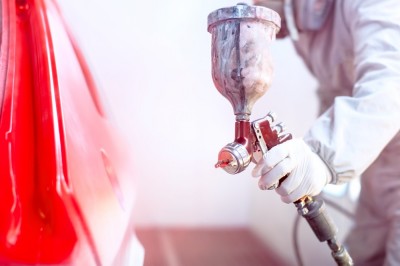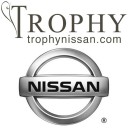The Colorful History of Automotive Paint
Whether you have a red Corvette or a blue Camaro or even a gray Tesla, you know that paint is a huge part of the whole image associated with your car. By utilizing today's amazing technologies, at Trophy Nissan Collision Center , we can make a vehicle look amazing for our customers in Mesquite , TX and surrounding areas. Automotive painters are truly artists and paint manufacturers are coming up with new great finishes all the time, so this is definitely an exciting period in the world of automotive paint.
It All Began in the 1900s
You’ve probably painted the walls of your house, condo or apartment at some point, but you’ve almost certainly never taken a paint brush or a roller to your car. But, that’s precisely how the first car paint was applied more than a century ago. Auto manufacturers began painting vehicles around 1900, and in many cases, it could take 5-6 weeks to complete job. Varnish is the product that was applied to these first automobiles, which was used for decades on horse-drawn carriages. Once the varnish dried, the vehicle was sanded, refinished and polished.
The Advent of Spray Guns
When the 1920s rolled through, the automotive painting process started to speed up to accommodate the growing demand for new cars. Carmakers like Henry Ford started using nitrocellulose lacquer on assembly lines, because it has a faster drying time.
using nitrocellulose lacquer on assembly lines, because it has a faster drying time.
Then, in 1924, spray guns started to appear in car factories all over the world. The spray gun made it feasible for workers to paint cars at a much higher rate and also resulted in a superior product. By using spray guns, cars didn’t require as much sanding between coats, and a vehicle could be painted in days instead of weeks.
More Advancements in Auto Paint
In 1955, General Motors started using a new acrylic coating to further expedite the painting process. Cars were sprayed with the enamel and then baked in an oven, which resulted in a consistent and smooth finish. Ford tweaked the process in 1960, when it began utilizing acrylic stoving enamels, which were also applied with a spray gun and oven-baked, resulting in a more resilient and lustrous finish.
In the 1970s, European and Japanese automakers developed two-coat acrylic painting systems and were producing metal flake paint jobs that were all the rage in the U.S. However, it wasn’t long before carmakers began to look for harder, more resilient paints that also dried more rapidly.
A wide range of different automakers started applying polyurethane and urethane finishes by the late 1980s, and they also started spraying a clear coat to pump up the color and luster of the vehicles rolling off assembly lines.
Today's painting process is even more advanced, due to innovation, new products and new equipment. Carmakers such as Hyundai use a method known as electrocoating, which involves dunking the chassis in primer or paint and utilizing good old electricity to draw the finish to the sheet metal. The carmaker coats its vehicles precisely 11 times in a primer bath before painting and assembly, and with the exception of final inspection and polishing, its methods are completed entirely by robots.
So, the next time you look at your car's paint job and smile with pride, give much respect to the scientists, carmakers and innovators who changed the colorful history of automotive paint.
We strive to bring you relative content from Trophy Nissan Collision Center in Mesquite , TX .
Sources: Wikipedia, Autobody News and Ask.com












 using nitrocellulose lacquer on assembly lines, because it has a faster drying time.
using nitrocellulose lacquer on assembly lines, because it has a faster drying time.
Social